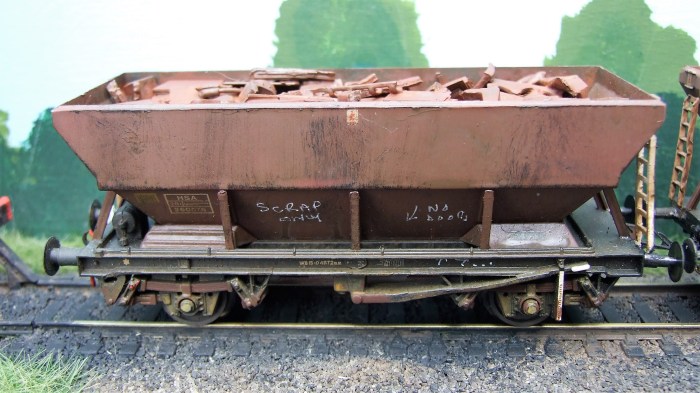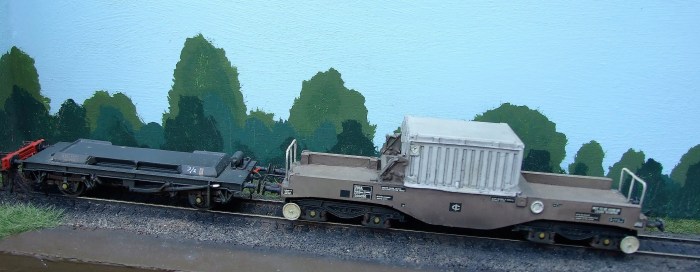After putting several rakes of wagons on this site, and having highlighted the couplings on several. I thought I had better explain how and why I use this system. I must emphasise that this system is for ‘fixed rakes’ only.
Firstly, on my garage layout (not on this site yet) the fiddle yard is very short of space. I calculated that in some of the smaller sidings, if I could save space between the wagons, I could have longer (more prototypical) rake lengths. If you go back to what I call ‘pre-modern’ tension lock couplings, the likes of Lima, Hornby and Mainline, without being unkind, they were enormous. To say they look anywhere near prototypical distance apart is a joke!
The first thing I did was to lay down some rules:-
The fixed coupling must negotiate 3rd radius curves – to make sure they did all couplings would be tested on 2nd radius curves to ensure OK.
The distance between wagons must be reduced dramatically – priority would be four-wheel wagons of all wheel bases.
The original chassis must be used – no expensive modifications.
The new system must be discreet and much less obtrusive.
I also wanted to have representations of Vacuum Brakes, Air Brakes, Coupling Hooks and 3 link couplings/instanter couplings.
The first wagon would have a modern tension lock on one end to couple to the locomotive. This could be modified to decrease the gap. All the loco’s I use on my garage layout have a detailed buffer beam at one end and tension lock at the other.
The rear wagon would have a prototypical coupling, Screw, 3 Link or Instanter. A tail lamp and pipes would also be fitted.
I would also number the wagons (underneath) so that would always be assembled in the right order.
Now the work started, I did trials with various ideas. I won’t go through these as most were total failures! I would also say that whatever I came up with looked like a small tension lock hook, a Spratt and Winkle or a Dingham’s hook. I concluded I was trying to ‘re-invent the wheel’. Common sense prevailed and my final choice was ‘Spratt and Winkle 3mm couplings for 4mm stock. Yes I did try 2mm Spratt and Winkle’s on some small wheelbase wagons, VEA’s I think, but you have to lengthen the loop to fit, this defeated the object. The one final thing I needed to do was to pick a standard wire for the loops. I tried various thickness and settled on ‘Gibsons .7’.
I later moved on to bogie wagons. These very much depend on the length of the wagon, the shorter ones can go on the buffer beams as per the four wheelers, but the longer ones need to be attached to the bogies. Please note I do not use this system on coaches as there are better solutions for them.
I also ‘chemically blacken’ both the Spratt & Winkle’s and the Brass Wire, giving them a good clean first.
There is no reason why you should not add a ‘working’ Spratt and Winkle into a rake so that it can be split for shunting.




Like this:
Like Loading...











































































